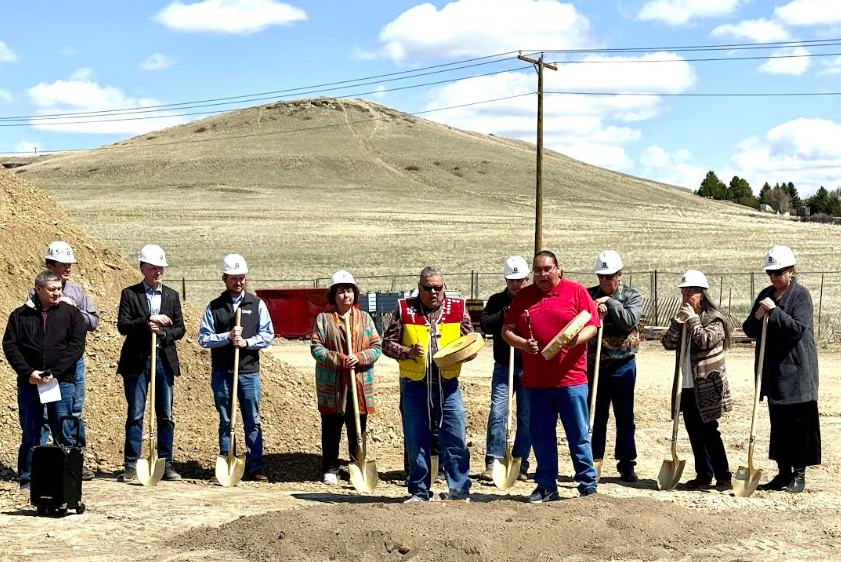
- Details
- By Native News Online Staff
The Little Shell Tribe of Chippewa Indians of Montana officially broke ground today on its long-anticipated Ceremonial Center, marking a significant milestone in the Tribe’s ongoing journey of resilience, cultural renewal, and self-determination.
Elders, tribal leaders, community members, and local and state dignitaries gathered to commemorate the occasion and celebrate the future of this vital space. Once completed, the Little Shell Ceremonial Center will become a cornerstone for cultural gatherings, traditional practices, language preservation, and community events. It will also serve as the centerpiece of the Tribe’s future 18-acre housing development, which will rise on the land surrounding the Center.
“This ground we stand on carries the stories of our ancestors,” said Chairman Gerald Gray. “Today, we create a place on this ground where future generations can continue those stories—with strength, pride, and connection to who we are.”
The new Ceremonial Center will share its location with the Tribe’s Miijim Program (Food Distribution) on Stuckey Road, adding to the growing network of tribal government facilities that provide essential services to Little Shell citizens. Designed to meet the needs of a vibrant and engaged community, the center will include a spacious meeting hall accommodating up to 200 people, outdoor gathering spaces, and a fully equipped kitchen to enhance community luncheon programs.
This project is the result of years of thoughtful planning and stands as a powerful symbol of the Tribe’s resurgence in the wake of its federal recognition in 2019—a historic victory following decades of tireless advocacy.
“This is more than a building,” said Vice Chairman, Clarence Sivertsen. “It’s a home for our spirit and cultural learning. It’s a gift to future generations of Little Shell citizens.”
The Tribe has partnered with Dick Anderson Construction to bring the Ceremonial Center to life. “We’re honored to be selected for this project and look forward to helping realize the Tribe’s vision,” said Josh DeVos, Vice President of Dick Anderson Construction.
Construction is slated for completion in early 2026. Once finished, the Tribe plans to host an inaugural celebration and blessing to mark the official opening of the new center.
More Stories Like This
50 Years of Self-Determination: How a Landmark Act Empowered Tribal Sovereignty and Transformed Federal-Tribal RelationsNCAI, NARF Host Session on Proposed Limits to Federal Water Protections
“Our Sovereignty Is Not Optional”: Tulalip Responds to ICE Actions
Denied Trip to Alcatraz, Leonard Peltier Tells Sunrise Gathering: “My Heart Is Full”
‘Meet your prayer halfway’ | Women-Led Bison Harvests Bring Tribal Food Sovereignty
Help us defend tribal sovereignty.
At Native News Online, our mission is rooted in telling the stories that strengthen sovereignty and uplift Indigenous voices — not just at year’s end, but every single day.
Because of your generosity last year, we were able to keep our reporters on the ground in tribal communities, at national gatherings and in the halls of Congress — covering the issues that matter most to Indian Country: sovereignty, culture, education, health and economic opportunity.
That support sustained us through a tough year in 2025. Now, as we look to the year ahead, we need your help right now to ensure warrior journalism remains strong — reporting that defends tribal sovereignty, amplifies Native truth, and holds power accountable.
 The stakes couldn't be higher. Your support keeps Native voices heard, Native stories told and Native sovereignty defended.
The stakes couldn't be higher. Your support keeps Native voices heard, Native stories told and Native sovereignty defended.
Stand with Warrior Journalism today.
Levi Rickert (Potawatomi), Editor & Publisher

